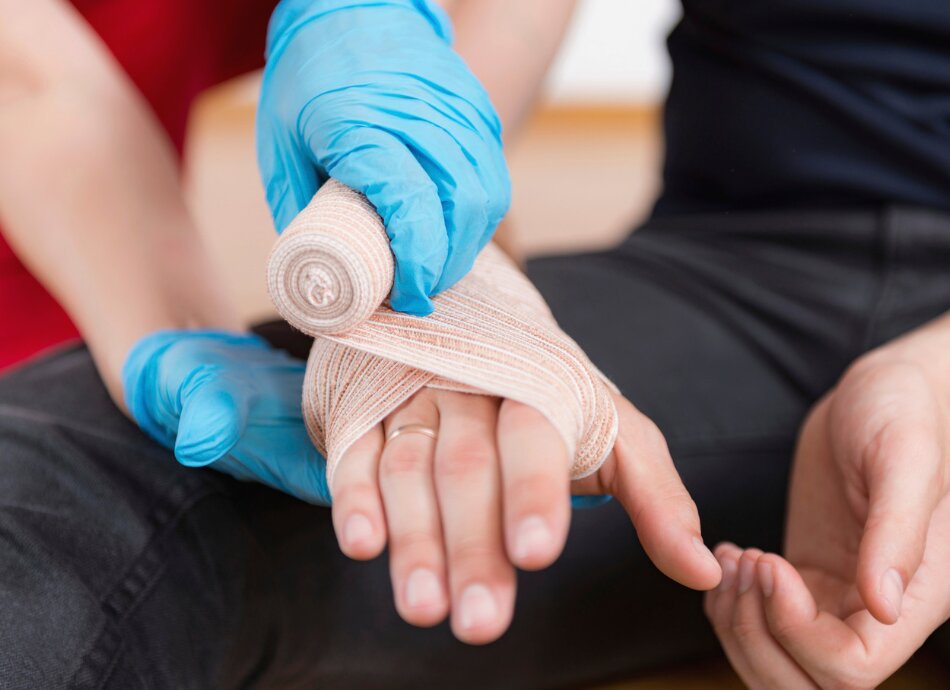Wishing everyone a safe and happy Christmas and New Year – Meri Kirihimete from the Healthify team.
First aid tips
Key points about first aid
- Knowing how to do basic first aid, and when to call for an ambulance, can be life saving.
- Some situations are medical emergencies and it's important that you get help as soon as possible. However there may be some first aid techniques you can use to help keep the person alive until an ambulance arrives (eg, putting a person in recovery position).
- There are other times when you can use first aid to treat a minor injury yourself.
- In both cases it is useful to know some first aid and have a first aid kit on hand for when it might be needed.

For a medical emergency call 111 and ask for ‘ambulance’ when you are asked what service you want.
| Examples of a medical emergency |
|---|
|
Read more about who to contact if you need non-emergency medical help, and remember that free health advice is available 24/7 from Healthline 0800 611 116.
Whether you are called on to deal with a serious medical emergency (when you need to call for an ambulance) or to manage a minor injury (eg, a superficial cut, or a small burn) it's useful to know some first aid techniques. Read about some common first aid techniques.
First aid courses
St John and the New Zealand Red Cross offer a range of New Zealand Qualifications Authority (NZQA) approved first aid courses that can help you gain knowledge.
St John
St John's one day level 1 first aid course(external link) covers how to recognise and provide first aid for:
- Bleeding and shock.
- Burns.
- Poisoning.
- Heart attacks and chest pain.
- Strokes.
- Seizures.
- Fractures and dislocations.
- Soft tissues injuries.
- Allergic reactions (anaphylaxis).
- Asthma.
- Diabetes.
It also covers how to recognise and provide basic life support including:
- Scene and hazard management.
- Patient positioning and assessment.
- CPR (adults, children, infants).
- Defibrillator (AED) use.
- Choking (adults, children, infants).
- General care.
The New Zealand Red Cross
The Red Cross has a similar 8 hour essential first aid course(external link) covering the following:
- Primary assessment.
- Stable side positioning.
- Scene management of emergency situations.
- Cardiopulmonary Resuscitation (CPR) – adult, child and infant.
- Use of an Automated External Defibrillator (AED).
- Foreign body airway obstruction (choking) – adult, child and infant.
- Control of life threatening bleeding.
- Bleeding, shock and wound care.
- Fractures, sprains, strains and dislocations.
- Medical conditions – heart attack, angina, asthma, diabetes, seizures, stroke and severe allergies.
- Poisoning.
- Burns – thermal, chemical and electrical.
Apps reviewed by Healthify
You may find it useful to looks at some First aid and emergency apps.
A well-stocked first aid kit also goes a long way to help in minor and major emergencies. You should have keep one in your home and car. If you are going on a trip (eg, a hike, to the beach or on a boat) take a first aid kit with you. You can make up your own, or buy one from St John, the Red Cross or a range of other suppliers.
| Useful items to have in your first aid kit include: |
|---|
|
Everyone has been there. No sooner did you or your child touch that old wooden bench when a small sliver of wood slides into the skin – causing a surprising amount of pain. Fortunately, splinters are easy to remove with the proper tools and technique.
Video: How to remove a splinter
This video may take a few moments to load.
(American Academy of Dermatology, US, 2016)
What happens when you call(external link) 111 St John, NZ
First aid library(external link) St John, NZ
First aid at work(external link) Worksafe, NZ
First aid(external link) Mountain Safety, NZ
Resources
First aid courses St John(external link) NZ Red Cross(external link) NZ
Buying a first aid kit St John(external link) NZ Red Cross(external link) NZ
Brochures
Burn first aid factsheet(external link) ANZBA. Available in the following languages: English(external link), Arabic(external link), Chinese(external link), Greek(external link), Italian(external link), Sudanese Arabic(external link), Vietnamese(external link)
Apps/tools
Credits: Healthify editorial team. Healthify is brought to you by Health Navigator Charitable Trust.
Reviewed by: Healthify editorial team.
Last reviewed:
Page last updated:





